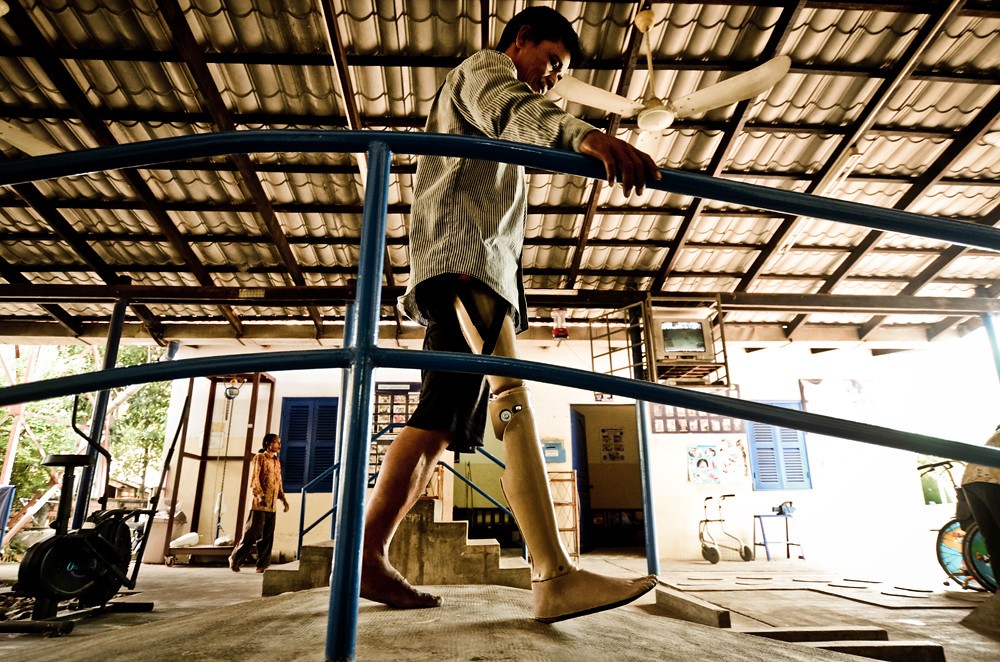The Rehabilitation 2030 Initiative

The World Health Organization (WHO) has made rehabilitation one of its top priorities over the next several years through the Rehabilitation 2030 initiative. This program strives to increase the availability and accessibility of rehabilitation services around the world. According to WHO, rehabilitation involves “a set of interventions designed to optimize functioning and reduce disability in individuals with health conditions in interaction with their environment.” Treatment can involve a combination of assistive devices, counseling and therapy to achieve this outcome. Unfortunately, “in some low- and middle-income countries, more than 50% of people do not receive the rehabilitation services” necessary to live a better quality of life. The Rehabilitation 2030 initiative seeks to address this.
The Global Need for Rehabilitation
Hundreds of millions of malaria cases occur every year with the large majority happening in developing tropical nations in Africa and Southeast Asia. Around 10% of malaria survivors experience significant cognitive and neurological impairments that can impact their motor function, hearing and sight and their ability to process information. Rehabilitative techniques, such as cognitive therapy, can treat these disorders and give people a chance to improve their health and quality of life. Unfortunately, cognitive exercises and other similar rehab treatments are not widely available in many countries with high rates of malaria.
Over the past decade, the prevalence of diseases associated with severe disabilities has increased by more than 20%. This includes ailments like rheumatoid arthritis and cancer that can take a heavy physical toll on an individual, limiting one’s independence. The technologies and knowledge to rehabilitate many of these symptoms exist, but their availability is inadequate in many parts of the world, especially in low- and middle-income countries. In fact, the availability of trained rehabilitation specialists is about 10 per one million people.
Even when these services are readily available, cost, lack of transportation and waiting times serve as constraints to accessibility. Individuals with disabilities who go without rehabilitation are likely to remain hospitalized for longer and are at higher risk of developing complications. They are also less likely to achieve the independence required to return to employment and their social roles.
Disabilities and Poverty
Around “50% of disabilities are preventable” and tie closely with poverty. Unmanaged disability can become an obstacle to education, impacting literacy rates. According to a 2000 publication by the Department for International Development (DFID), UNESCO estimates that “1–2% of children with disabilities in developing countries receive an education.” Without access to an adequate education, people with disabilities are unlikely to find gainful employment. In turn, many of those individuals cannot pay for the cost of their own care, placing that burden on other family members.
In addition, families members may have to drop out of school or work to care for the person with a disability, reducing household incomes and closing the doors to future prosperity. These outcomes not only hurt those with disabilities and their families but also the societies that host them. Communities without adequate rehabilitation services bear financial burdens that go beyond direct medical costs, such as the loss of otherwise productive members of society who previously could contribute to the economy.
Rehabilitation 2030 Initiative
In 2017, more than 200 stakeholders met in Geneva to support WHO’s “Rehabilitation 2030: a call for action” conference. From this, the Rehabilitation 2030 initiative was born with an emphasis on three points:
- The open availability of rehabilitation for all populations.
- To strengthen and integrate rehabilitation into larger health care systems.
- To acknowledge that rehabilitation is an important service to develop to reach universal health coverage.
Under this initiative, participating nations accept these three points and agree to commit themselves to 10 areas of action. These areas address the need for rehab financing, the strengthening of networks that connect people and health care services and the need for further research into rehabilitation. In support of these goals, WHO has lent technical assistance to more than 20 countries in the creation of strategic plans. In 2019, representatives from member states and organizations reconvened and shared their strategies and progress with each other, reifying their commitments to increasing the availability of rehabilitation.
There is a growing need for expanding the availability of rehabilitative care around the world. Untreated disability can constrain people’s learning and economic potential. Fortunately, many nations around the world are acknowledging the importance of rehabilitative care through their commitments to the Rehabilitation 2030 initiative and strive to improve services.
– Gonzalo Rodriguez
Photo: Flickr
